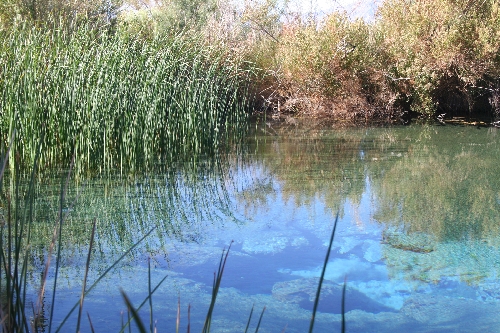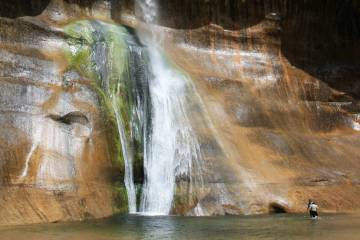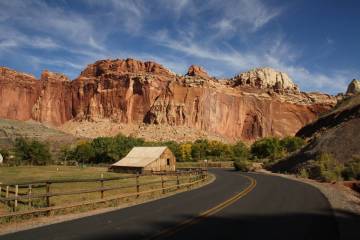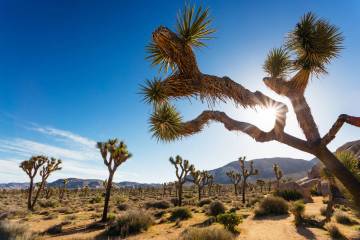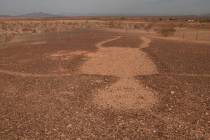Ash Meadows sure to leave the senses sated
Ash Meadows National Wildlife Refuge serves at least two important functions: preserving rare creatures and plants and preserving the sanity of urban visitors by surrounding them with the beauty of green wetlands, glimpses of small fish darting through natural pools and the sound of birdsong.
Lying in the Amargosa Valley near the California state line, the preserve encompasses about 23,000 acres. It isn't one of the nation's largest wildlife refuges, but it has the highest concentration of endemic species -- 26 life forms found nowhere else in nature. It has the highest number of threatened and endangered species of any national wildlife area.
The refuge's seven major springs and a multitude of seeps pour out 10,000 gallons of water per minute, year-round. That makes it the largest oasis in the Mojave Desert and marvelously rich with visiting birds during their spring and fall migrations. More than 275 species of birds have been documented in the refuge. This time of year, a fortunate birder might even get to see a rare or accidental migratory visitor such as the brown pelican, great blue heron, Calliope hummingbird or orange crowned warbler. Year-round residents include Gambel's quail, redhead and ruddy ducks, pied-billed grebe, American coot, loggerhead shrike and Bewick's wren.
Just about anyone can enjoy a visit here, even a person with limited mobility, as the refuge offers excellent boardwalk trails. The visitor center is the place to start; there you can pick up maps and get information on the trails and what birds have been seen recently. From the visitor center parking area, you can also access the Crystal Spring Trail. The trail consists of a level wood boardwalk, making a round trip of about half a mile, leading past natural pools and flowing springs.
Another excellent place to stop is the Point of Rocks Springs area. It has accessible bathrooms, parking and a quarter-mile, looping wood boardwalk that will take you to the King's Pool, one of the highlights of the refuge.
While there are four native fish species in the refuge, the easiest to see is the Amargosa pupfish, and the King's Pool is the best place to see it. Look closely for the blue males, which are somewhat larger than the green females. They can survive water an inch or less deep and as hot as 93 degrees.
There is also a covered accessible picnic area at the Point of Rocks area where you will find resting benches throughout, as well as interpretive signs.
The refuge is home to 27 species of mammals, including desert bighorn sheep, kangaroo rats, antelope ground squirrels, jack rabbits and bobcats. Two weeks ago, I was treated to the sight of nine desert big horn sheep near the King's Pool. There are also four amphibian species in the refuge and 20 reptiles. Keep a close eye out for the commonly found Great Basin gopher snake, California king snake, the western zebra-tailed lizard and chuckwalla.
More than 300 species of plants could bloom there in a good spring, including the threatened Ash Meadows sunray. Part of the place's name comes from the leatherleaf ash tree, once abundant here. Now the most common tree is the screwbean mesquite.
The refuge is open year-round, but visiting in summer can be uncomfortable. November and December, however, are pleasant, and a half-day visit to Ash Meadows combines nicely with a seasonable adventure in nearby Death Valley.
Deborah Wall is the author of "Great Hikes, A Cerca Country Guide" and "Base Camp Las Vegas: Hiking the Southwestern States," published by Stephens Press. She can be reached at deborabus@aol.com.



